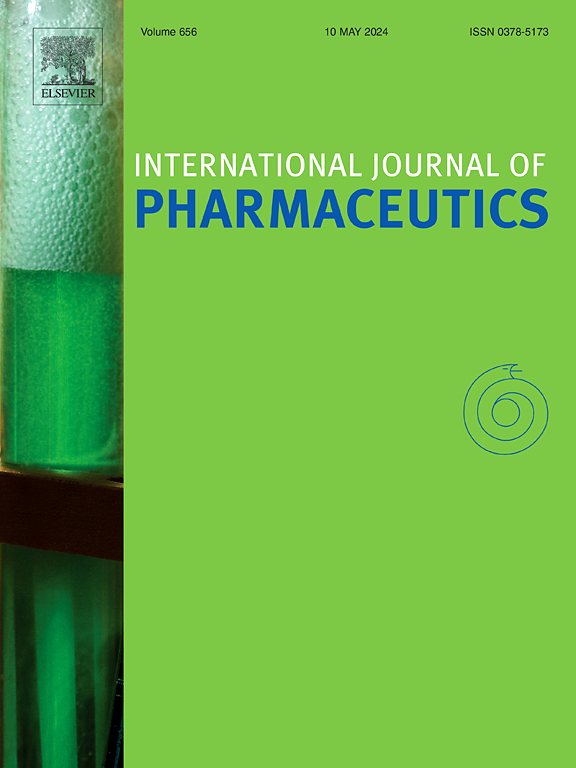The molecular design of novel phospholipid-inspired ionic liquid transdermal penetration enhancers: Innovative insights on the action mode and mechanism
IF 5.3
2区 医学
Q1 PHARMACOLOGY & PHARMACY
引用次数: 0
Abstract
Ionic liquid transdermal penetration enhancers (IL@TPEs) as new enhancement methods have significant advantages in the transdermal drug delivery system. However, the scientific frameworks for the design of efficient IL@TPEs and their applications in transdermal formulations were still lack. So, a series of novel biomimetic phospholipid-inspired IL@TPEs (PIL@TPEs) were designed and synthesized. The developed QSARs proved that enhancement efficacy of PIL@TPEs depended on pKa of drugs and M.W., Polar., and pKa of cations. Surprisingly, the PIL@TPEs dissociated during transdermal process, and skin penetration amounts of acidic drugs was inversely proportional to skin retention amounts of cations, which showed that action modes of PIL@TPEs were different from conventional enhancers. The novel mechanisms of PIL@TPEs were elucidated by quantitative determination of dynamic interaction among cations, anions, drugs, and skins. The PIL@TPEs with high enhancement efficiency owned strong interactions with drugs determined by ATR-FTIR, Raman and NOESY. Moreover, the PIL@TPEs owning better stability in skin ensured the production of strong interactions with lipids and keratins characterized by ATR-FTIR, 1H NMR and CLSM. The good safety of optimized PIL@TPEs was proved by determining cytotoxicity, apoptosis, inflammatory cells, and cytokines. In conclusion, this project will make an important contribution to the design and application of IL@TPEs.
新型磷脂离子液体透皮渗透增强剂的分子设计:对作用模式和机制的创新见解。
离子液体透皮渗透增强剂(IL@TPEs)作为新的增强方法在透皮给药系统中具有显著优势。然而,目前仍缺乏设计高效离子液体透皮渗透促进剂及其在透皮制剂中应用的科学框架。因此,我们设计并合成了一系列新型仿生物磷脂IL@TPEs(PIL@TPEs)。所开发的 QSARs 证明,PIL@TPEs 的增效作用取决于药物的 pKa 和阳离子的 M.W.、Polar. 和 pKa。令人惊讶的是,PIL@TPEs在透皮过程中发生了解离,酸性药物的皮肤渗透量与阳离子的皮肤保留量成反比,这表明PIL@TPEs的作用模式不同于传统的增强剂。通过定量测定阳离子、阴离子、药物和皮肤之间的动态相互作用,阐明了PIL@TPEs的新机制。通过ATR-傅立叶变换红外光谱、拉曼光谱和NOESY光谱测定,具有高增强效率的PIL@TPEs与药物之间具有很强的相互作用。此外,PIL@TPE 在皮肤中具有更好的稳定性,可确保与脂质和角蛋白产生强烈的相互作用,ATR-FTIR、1H NMR 和 CLSM 对其进行了表征。通过测定细胞毒性、细胞凋亡、炎症细胞和细胞因子,证明了经过优化的 PIL@TPEs 具有良好的安全性。总之,该项目将为 IL@TPEs 的设计和应用做出重要贡献。
本文章由计算机程序翻译,如有差异,请以英文原文为准。
求助全文
约1分钟内获得全文
求助全文
来源期刊
CiteScore
10.70
自引率
8.60%
发文量
951
审稿时长
72 days
期刊介绍:
The International Journal of Pharmaceutics is the third most cited journal in the "Pharmacy & Pharmacology" category out of 366 journals, being the true home for pharmaceutical scientists concerned with the physical, chemical and biological properties of devices and delivery systems for drugs, vaccines and biologicals, including their design, manufacture and evaluation. This includes evaluation of the properties of drugs, excipients such as surfactants and polymers and novel materials. The journal has special sections on pharmaceutical nanotechnology and personalized medicines, and publishes research papers, reviews, commentaries and letters to the editor as well as special issues.

 求助内容:
求助内容: 应助结果提醒方式:
应助结果提醒方式:


